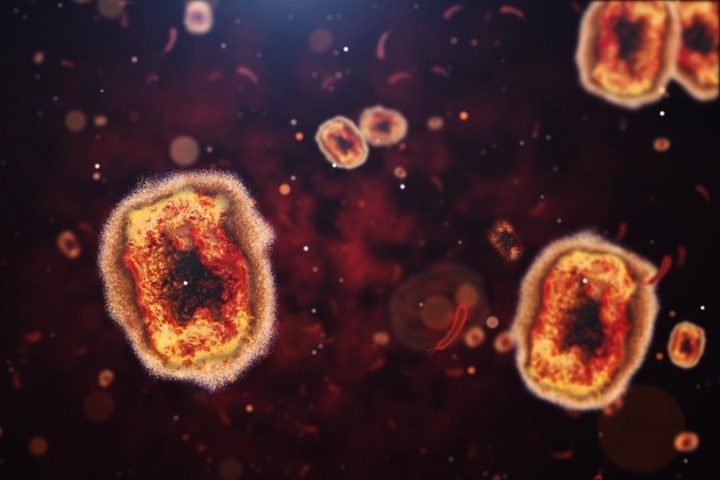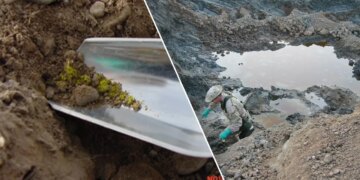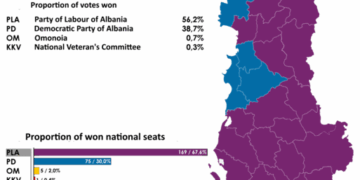
Key federal healthcare agencies under the umbrella of the United States Department of Health and Human Services (HHS) have been concealing plans for nearly nine years to engineer a highly transmissible and moderately fatal monkeypox virus (MPXV), according to a recent report by congressional investigators released Tuesday.
Over the past 17 months, the House Committee on Energy and Commerce has been carrying out an investigation into secretive gain-of-function research on monkeypox viruses conducted by the National Institute of Allergy and Infectious Diseases (NIAID), then helmed by Dr. Anthony Fauci.
The press release on the publication of the report details that the committee’s investigation was sparked by a 2022 Science magazine interview with Dr. Bernard Moss of the NIAID. In the interview, Dr. Moss disclosed plans to insert segments of a lethal strain of monkeypox into a more transmissible strain of the virus.
When repeatedly asked if any such experiments were proposed or approved, the representatives of the federal healthcare apparatus repeatedly said “no” before being finally pressed into admitting it. According to the press release:
For nearly a year and a half, the Department of Health and Human Services (HHS), the NIH [National Institutes of Health, a parent entity of the NIAID and subordinate of the HHS], and NIAID misrepresented and deceived the Committee by repeatedly denying that the potentially dangerous experiment was proposed and approved. However, after being pressed repeatedly by Committee Leaders, HHS ultimately admitted Dr. Moss’s research team had been granted approval to conduct a bidirectional [MPXV] gene-transfer experiment (i.e., inserting the more lethal strain into the more transmissible strain and vice versa). Documents made available for review to Committee staff confirmed the 2015 approval of the experiment and raised additional concerns.
This revelation has sparked significant concern and controversy over the transparency and accountability of federally funded gain-of-function research.
Details of the Monkeypox Experiment
According to the NIH, the experiment in question is part of a project on monkeypox virus enhancement planned and/or conducted at NIAID, “Poxvirus Host Interactions, Pathogenesis and Immunity” (1ZIAAI000979). NIAID’s Moss is the principal investigator of the project, which entails transferring genes from clade I, or Congo Basin clade, monkeypox, a rare and highly lethal strain, into clade II, or West African clade, monkeypox, the strain currently circulating in the United States. Clade I monkeypox is known to be lethal to more than 10 percent of unvaccinated humans; clade II monkeypox is not as fatal, but is far more transmissible.
In the aforementioned Science article, Moss detailed his team’s efforts to understand the crucial differences between the two variants of the virus. He stated that clade I monkeypox can kill a mouse at levels 1,000 times lower than those needed with clade II. To investigate why this is the case, Moss and his colleagues attempted to swap dozens of clade II genes into the clade I virus, one at a time, hoping to see it become less deadly. However, they were unsuccessful. The article says that “Now, [Moss and his team] are planning to try the opposite, endowing clade II virus with genes from its deadlier relative.”
The article also noted that poxviruses present a significant challenge for researchers due to their complexity. Moss admitted that biologists have little understanding of what tinkering with components of the monkeypox viruses could lead to:
With roughly 200,000 nucleotides and 200 genes, the monkeypox genome is more than 20 times the size of HIV’s. It’s not clear what many of those genes do, Moss says, let alone how they interact with each other or how changes in any of them might affect their impact on humans.
Still, the intricate nature and potentially devastating effects on human health did not deter the NIH from approving research on these poorly understood viruses.
Key documents viewed by Congress in March 2024 confirmed NIH’s formal go-ahead with the risky experiments. According to the congressional report issued in June:
The research proposal [approved by the NIH Institutional Biosafety Committee (IBC)] involved bidirectional transfer of genes between clades I and II of the MPXV, including a proposed transfer of genes from the more lethal clade I into the less lethal but much more transmissible clade II. [Emphasis in original.]
According to the congressional probe, the research could potentially create a chimeric (hybrid) virus with the increased transmissibility of clade II monkeypox along with the high lethality of clade I monkeypox. This new virus could have a reproductive number of 1.10 to 2.40, meaning the infected person could transmit it to up to 2.4 people on average. Such a reproductive number is considered high and signifies that the infection would spread exponentially. A case fatality rate of the new virus would also be high — from 10 to 15 percent “in the unvaccinated population.” That means that 10-15 out of 100 of those who catch the virus for the first time would die from it.
Congressional Investigation and Findings
The committee’s efforts to gather information about the experiment discussed by Moss were consistently stonewalled. The probe revealed that HHS and NIH intentionally misled investigators by denying the approval of the experiment on multiple occasions.
According to the committee,
HHS and the NIH misled the Committee in official written correspondence about the MPXV gene transfer experiment on no fewer than five occasions over the course of 17 months. This does not include additional instances of misleading verbal statements or email communications by HHS and NIH leadership and senior scientific officials to Committee staff.
HHS, the NIH, and NIAID told the Committee that a risky MPXV research proposal at NIAID had not been “formally proposed” or “planned.” These assertions simply were not true.
“The agencies’ deception of Congress is unacceptable and potentially criminal,” says the report before going into detail about the timeline of the investigation and the communications between the committee and the federal healthcare agencies.
Noting that “the Committee has lost trust in the NIH and NIAID’s ability to oversee its own research on potential pandemic pathogens or enhanced potential pandemic pathogens and to fairly determine whether an experiment poses an unacceptable biosafety or public health risk,” the report suggests a few policy improvements, including formalizing public input through a community oversight board, similar to those already in place for high-containment Biosafety Level 4 laboratories (BSL-4), and transferring final approval for gain-of-function research away from NIAID.
The moratorium on gain-of-function research in the United States was imposed in October 2014 and lifted in December 2017.
Shop For Night Vision | See more…
Shop For Survival Gear | See more…
-
Sale!

Mesh Shooting Hunting Vest with Multi Pockets
Original price was: $59.99.$39.99Current price is: $39.99. Add to cart -
Sale!

Japanese 6 inch Double Edged Hand Pull Saw
Original price was: $19.99.$9.99Current price is: $9.99. Add to cart -
Sale!

Portable Mini Water Filter Straw Survival Water Purifier
Original price was: $29.99.$14.99Current price is: $14.99. Add to cart

































 Reaction & Commentary
Reaction & Commentary















